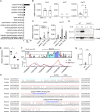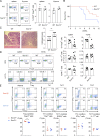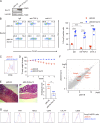Sox12 promotes T reg differentiation in the periphery during colitis
- PMID: 30190287
- PMCID: PMC6170178
- DOI: 10.1084/jem.20172082
Sox12 promotes T reg differentiation in the periphery during colitis
Abstract
Peripherally induced regulatory T (pT reg) cells play indispensable roles in regulating gut inflammation; however, the mechanism underling the differentiation of pT reg cells under inflammatory conditions remains largely unknown. Here, we show that the expression of Sox12, a member of SoxC family, is significantly induced in T reg cells in colitic mice. We also show that TCR-NFAT signaling induces Sox12 expression in CD4+ T cells. Although Sox12 is not required for the development of thymus-derived T reg (tT reg) cells, Sox12 is involved in the development of pT reg cells under inflammatory conditions in an adoptive transfer colitis model. Moreover, we found that enforced expression of Sox12 is sufficient to promote Foxp3 expression in CD4+ T cells even in the absence of TGF-β or IL-2 and that Sox12 binds to Foxp3 promoter and drives its transcription. These results suggest that TCR-NFAT signaling induces the development of pT reg cells in colitic mice partly through Sox12 induction.
© 2018 Tanaka et al.
Figures





References
Publication types
MeSH terms
Substances
Grants and funding
LinkOut - more resources
Full Text Sources
Other Literature Sources
Molecular Biology Databases
Research Materials

